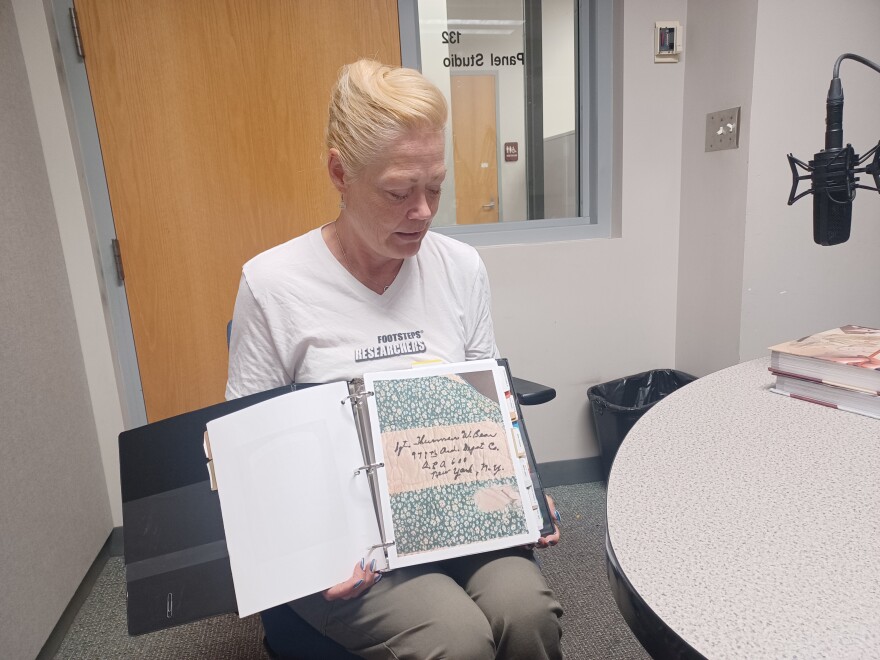The quilt is embroidered with the names of 36 Native American men who fought in World War II and are members of the Quapaw Nation in Oklahoma. Each name is on an individual square.
Nathan Pinter, curator of The 1944 War Museum in Washington, Missouri, saw the quilt for sale on eBay and knew he had to have it.
Once it arrived, and he realized the first 18 veterans were members of the Quapaw Nation, he reached out to Myra Miller, founder of Footsteps Researchers in St. Louis to learn more about them. She assigned the project to Footsteps researcher, Kathryn Vicat, who’s based in Springfield, Missouri, and Vicat discovered that all of the 36 men were members of the Quapaw Tribe.
“One gentleman was in there and was a fighter pilot and was killed in action. And there’s just a really great story about what he did and just the level of heroism that he had,” she said.
When Vicat finished her research, she had collected more than 1000 pages of documents, which will also be given to the Quapaw Tribal Museum.

Footsteps Researchers specializes in discovering the footsteps of WW II veterans. The goal is to understand not only where a veteran served, but also why they were there and how their service impacted the outcome of the war.
It was an honor to work on the quilt project, Vicat said. She pointed out that each name on the quilt is a son, a father, a grandfather, a cousin or an uncle. She spent five to seven hours researching each of the veterans whose names are embroidered on the piece.
"You know, I feel like they're all family members, and they're all friends, and, you know, you spend so much time reading, and you look at something, and you're like, 'holy cow, I can't believe I found this,' and it brings home a connection, and it makes that history right there. It's visceral. It's right in front of you," she said.
When Pinter purchased the quilt, he planned to hang it in The 1944 War Museum, according to Vicat. But when he learned the men were from the Quapaw Nation, he knew it had to go back there.



